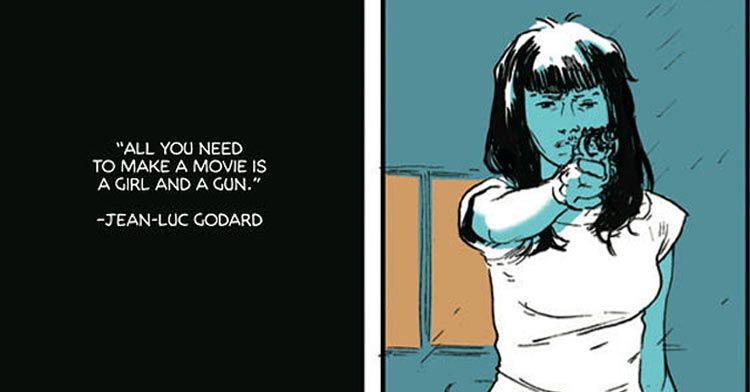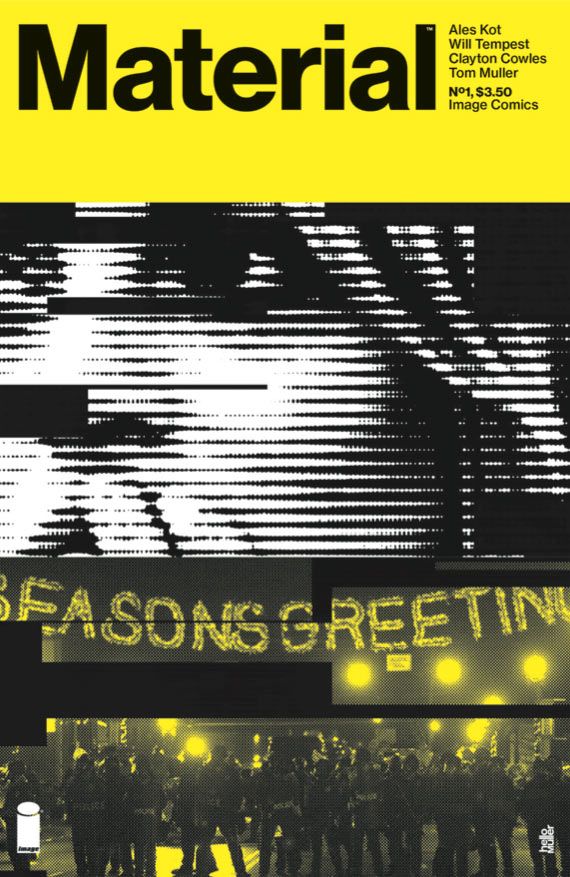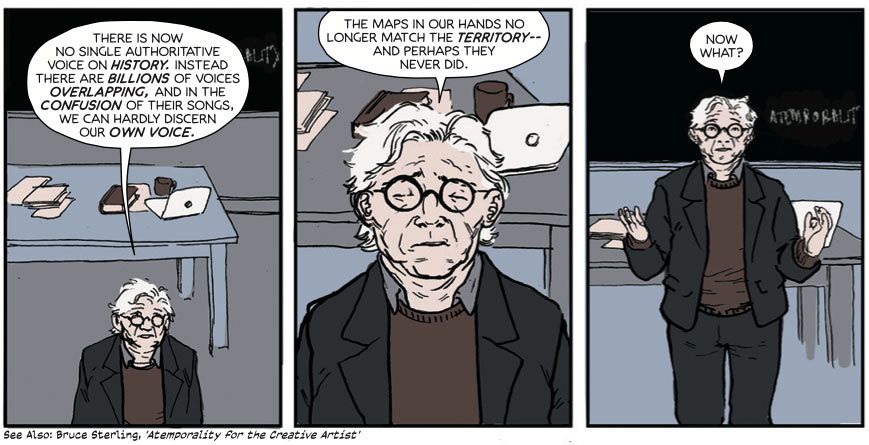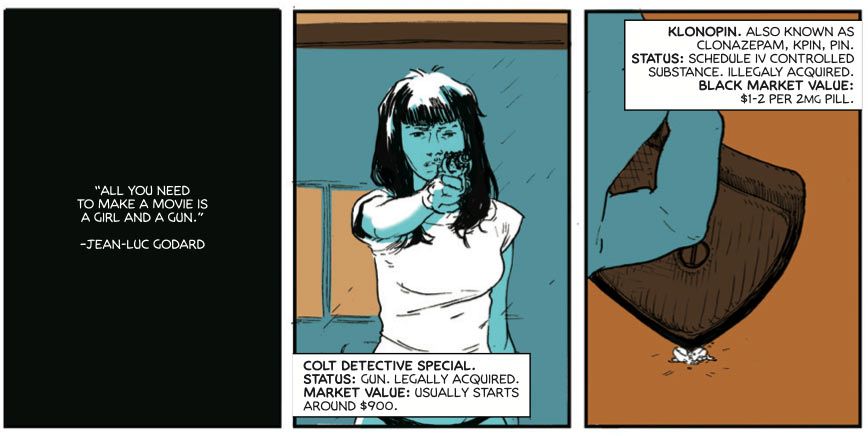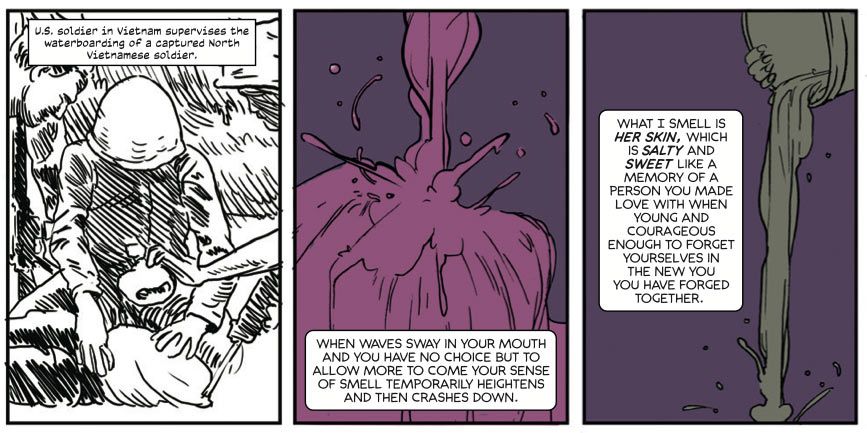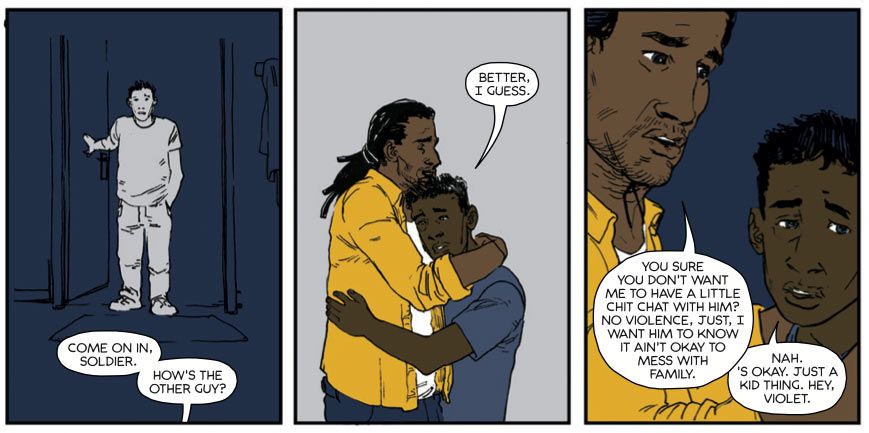Like all great fiction, the best comics are stories of struggles. Sometimes they chronicle grand scale epics of costumed heroes battling against fantastic forces, while other times they tell stories about everyday people and their attempts to make sense of the danger, ugliness and wonders of life. The former is, of course, typically told through gigantic slugfests that determine the fate of the world, while the latter are often tales about an average person trying to rebuild their own personal world or prevent it from falling apart.
But that doesn't mean grounded, literary-style comic stories can't be epic in their own right. In the May-launching "Material," writer Ales Kot and artists Will Tempest and Tom Muller set out to show readers that the average person's quest to cope with the pain, confusion and wonders of life is just as fascinating as the costumed hero's quest to save the world.
RELATED: Kot Unwraps the Near-Dystopian Mysteries of "The Surface"
CBR News spoke with Kot about the loose and informal structure he's using to write the creator-owned series, the use of art to confront the damage of violence and oppression, the extras that will compose the back matter of "Material," and how his latest Image Comics release may just be the project he's been waiting his entire life to write.
CBR News: Your other creator-owned books, like "Zero" and "The Surface," have genre elements to them that help give people clues as to what they're about. You can look at them and say, "that's a spy book," and, "that's a science fiction book." Are there clear genre elements to "Material?
Ales Kot: "Material" is about life, so whatever genre elements, whatever mystery occur -- they occur from the characters, from the situations. Everything around us is Material, as Julius Shore says in the first issue.
I could be selling this to you hard, but the thing is, how do I sell something that's pure expression? I don't really know. I want it to sell itself by the strength of the comic, not throw marketing phrases at you or make boxes to fit the comic into. I'm sure some people will throw words like "pretentious" at it, but I'm not attempting to impress anyone by making "Material" look more important than it is. I don't know how important it is. I just know it's a comic I've been waiting to do my whole life, without knowing anything specific about it before I began writing. It feels like a purer, more personal expression of life than I've been able to give before.
What inspired "Material?" How long have you been developing the book?
Everything is "Material." The inspiration never stops. I had some stories I wanted to tell separately, then realized I could join them, then realized I wanted to work with Will Tempest, then realized I could do it all while utilizing a 9-panel grid all the way, which is something I rarely see done in comics these days despite it being one of the best delivery systems for dense storytelling -- and, somewhere along the way, things happened.
The core of wanting to make "Material" -- at least one of the key sources -- could probably be traced to Charlie Kaufman's work, and to this speech.
In the opening issue, you introduce readers to four very different people. What do you want readers to know about these characters? How similar and how different are they?
Everything I want the readers to know is within the comic itself. I'd like to suggest that the readers embrace the mystery and enjoy diving into something they won't know much about. I'll say that the cast is diverse and far from complete.
Are the main cast members on their own separate journeys, or will they eventually meet and interact with each other?
I'm letting it write itself. I have some ideas of where things are leading in the first four issues, but just as with "Zero" or "Secret Avengers," I'm not writing "Material" with a tight outline. I believe in tight outlines as a valid approach -- I'm just writing a TV script that I worked out as a big scene-by-scene outline first -- but here -- "Material's" much more Altman, Lynch, Didion, Duras, and maybe, although I don't know how exactly he makes his comics, Daniel Clowes? I'm letting the scenes come to me without forcing traditional genre or narrative restrictions on them.
As for the people in "Material," I have a sense that some paths might eventually intersect, but I can't know for sure until I get there. Films like "Amores Perros" likely influenced my approach, but I genuinely can't tell which path I'll take. And that's exciting.
When "Material" begins, your characters appear to based in different places in America. Is this a series solely about life in America?
That's a beautiful question. I can't tell. It began as a series that is all about America, but the thing about a series based solely in America is -- if you want to depict America accurately, I suspect you have to show how it affects other parts of the world, and so on. I'm contemplating this feedback loop -- which isn't a one-way street -- a lot, and while the answer is not yet clear, it's present in every storyline from issue one.
The journey these characters are on suggests you'll be confronting and exploring a lot of real world problems like the impact of racism, police brutality, and torture, along with the physical and emotional damage these problems inflict on people. What's it like tackling those subjects ?
It's necessary. Art is supposed to ask hard questions. Art is supposed to not close its eyes in front of injustice and pain. So -- it's sometimes daunting, sometimes exhilarating, and always necessary.
The art team for "Material" is your frequent collaborator Tom Muller, who's done multiple covers for your creator-owned books, and Will Tempest, who provided the interiors for "Zero" #5. What made you want to tap these guys for this book?
Will proved he can work in 9-panel grids with excellent results on "Zero," and his command of depicting people and environment is deeply empathic. That's why I chose him. Tom is one of the most creative designers in the field, and he's also very open to collaboration. And let's not forget about Clayton Cowles, who at this point letters nearly everything I do, for a good reason -- he's creative, dependable and knows how to lead you through a page without you even noticing that the balloons and captions play integral part in the composition of the page.
Speaking of which, I noticed you do something in "Material" that not many comics do these days: You use the bottom margins to leave notes to the reader. What made you want to do that? What do these notes add to the story you're telling?
Density. I'm big on storytelling density. Stories need to breathe, yes, but they also need to connect, and the notes are another path to do just that. They are also ways to show more of the world, lead the reader outside, embrace more of what is possible.
In addition to the main story, readers will also be treated to back matter pages. What can you tell us about some of the things that will be featured in these pages? Is it sort of comparable to what Ed Brubaker and Sean Phillips have done with their books?
There will be essays by writers like Fiona Duncan, Sarah Nicole Prickett, Jarett Kobek and more. The essays will connect to the themes of the comic. I'm interested in featuring writers I love, giving them free rein -- and letting you find them.
As far as comparisons go -- yeah, it's kind of similar. Do the comic, slap a connected essay by a good writer in the back, let people find it, hope it connects.
If "Material" connects with readers is this a series that you could keep going for years? Or do you have a specific end point in mind for the book?
I'd love to keep going for a long time, yes. If "Material" can be our "Cerebus" -- in length and craft, not in the sexist bits -- I think that could be great.
Consider getting two copies of the first issue of "Material" and giving one to your friend. If you won't like it, or if the friend won't like it, or both, email me at aleskotsays@gmail.com, send me the comic(s) and I'll give you a refund.
I aim to do interviews without any expectations, and there's so much marketing out there that the less I do here, the better. I want the comic to connect enough that it will render marketing obsolete. Which, considering the fluid subject matter and refusal to categorize, is the kinda shot that feels doomed on arrival -- but I'm doing it nevertheless, and the reason for it is, this comic feels like something I need to do. And shouldn't that be at the core of what art is about? To ask questions, to keep eyes open?
"Material" arrives in May from Image Comics.

